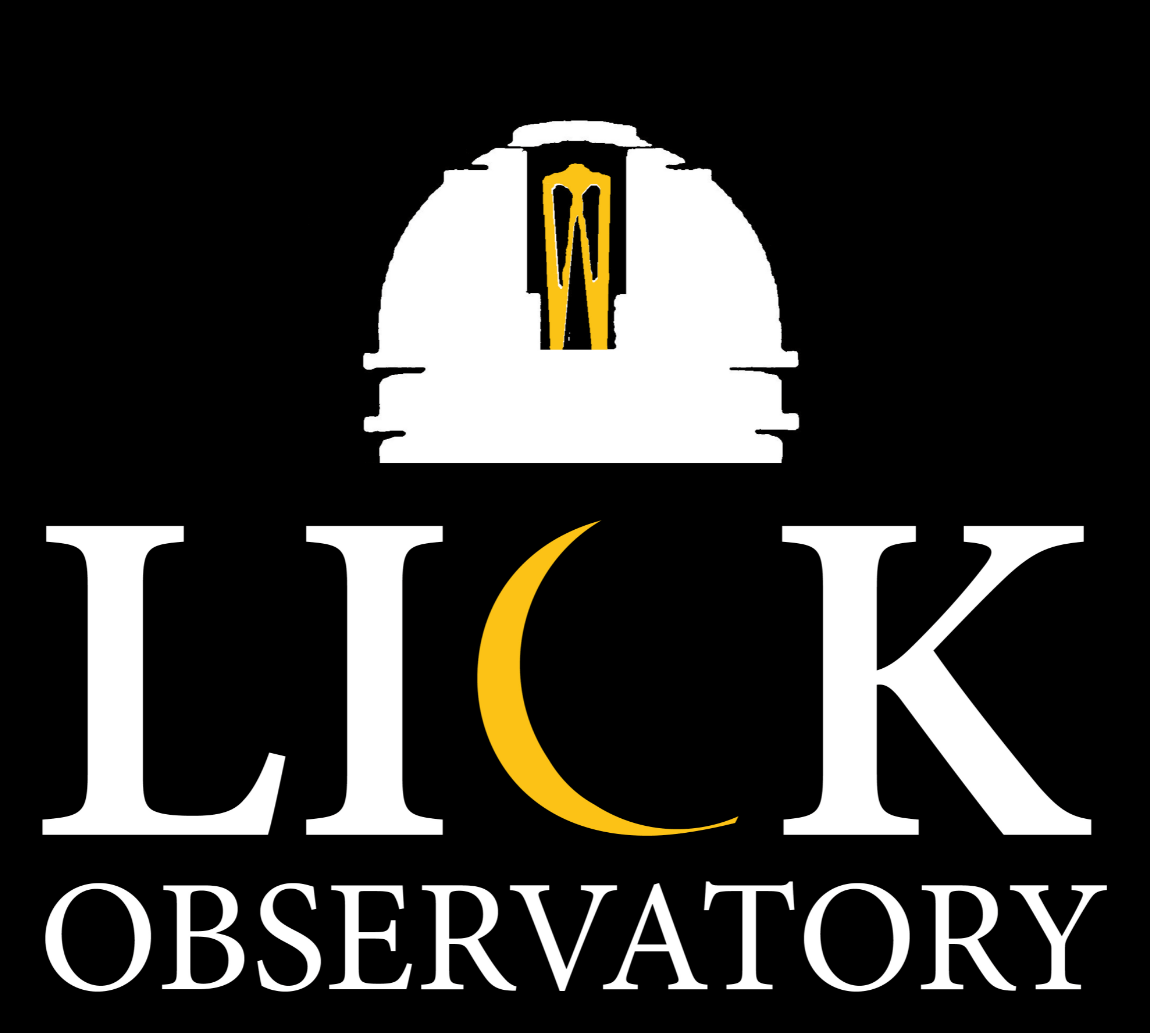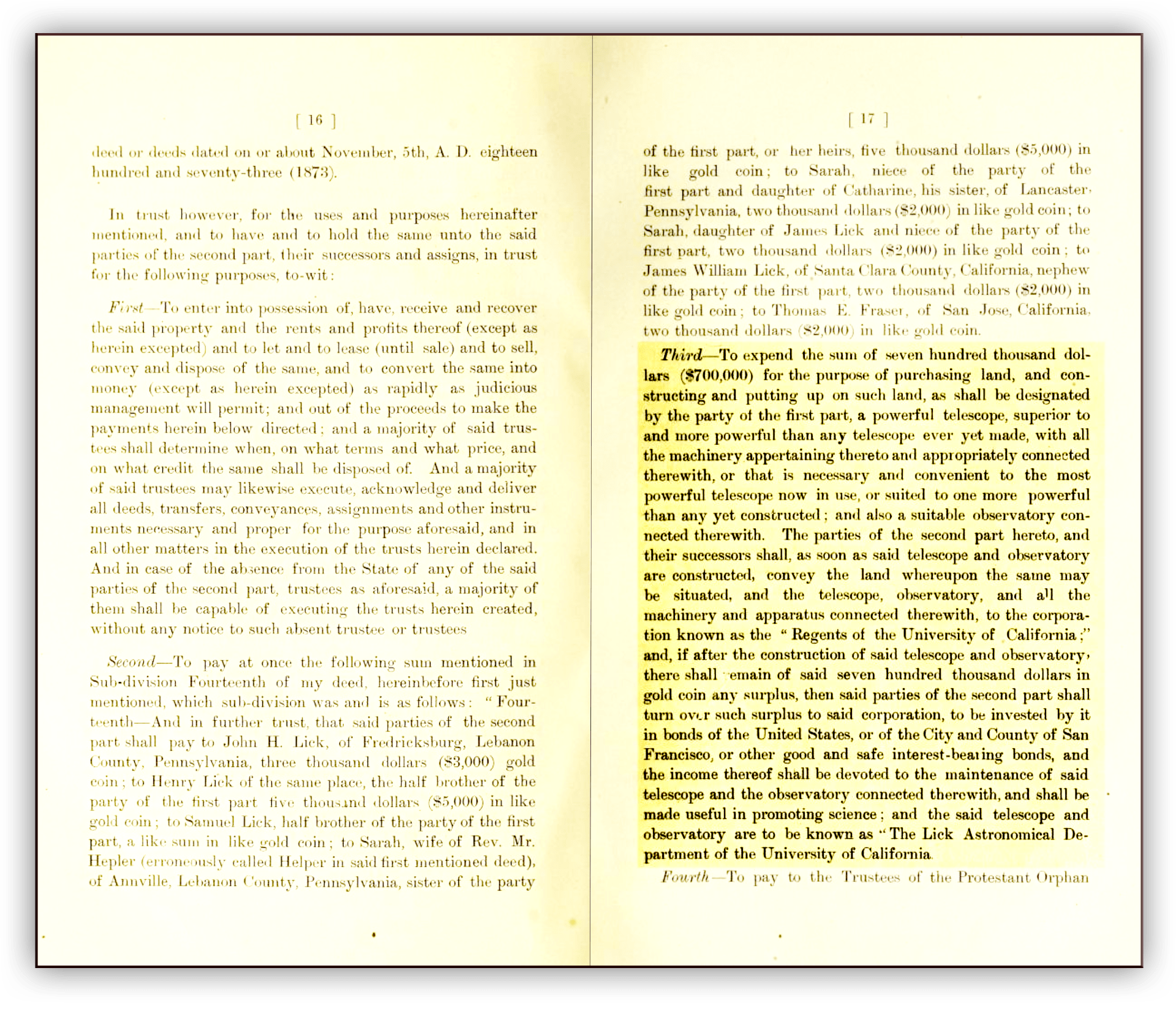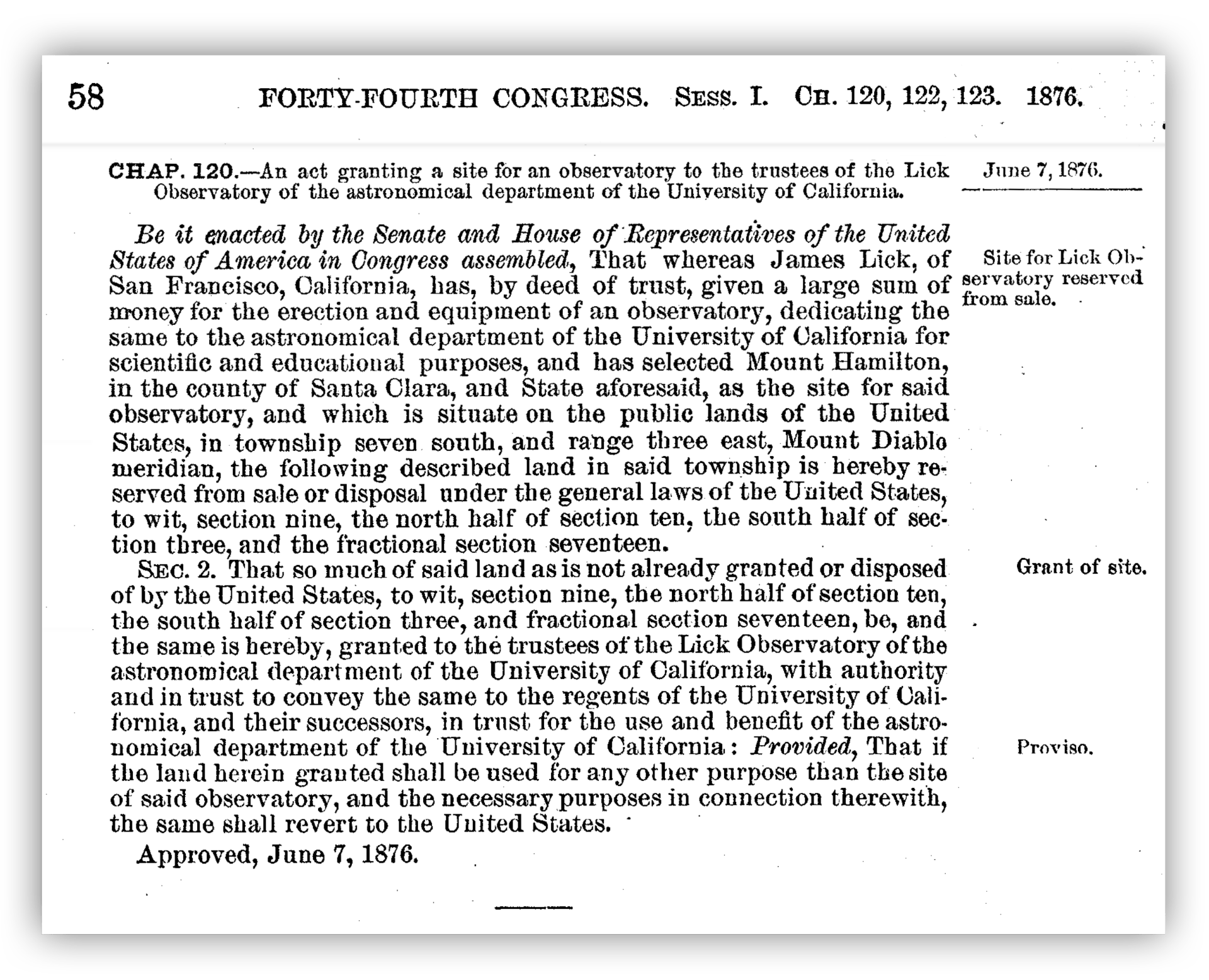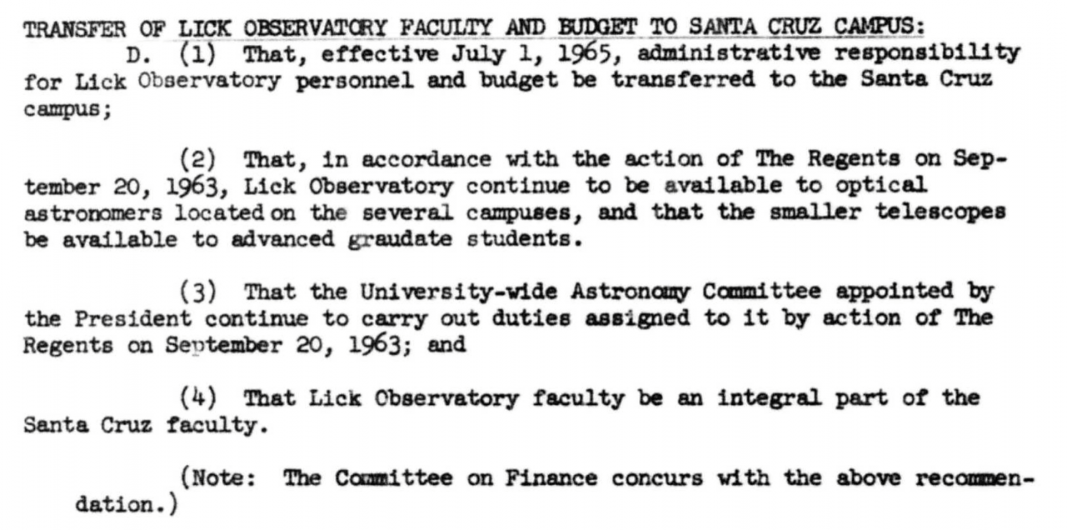Since 1888, Lick has provided UC astronomers with access to world-leading optical-infrared observing equipment. Lick Observatory is owned and operated by the University of California. It is a major site in the University of California Observatories (UCO), which is responsible for its operations.
Lick began operations in 1888 as part of the University of California. It was founded by a bequest from James Lick, real-estate entrepreneur and California’s wealthiest citizen. Lick’s gift of $700,000 was the largest philanthropic gift in the history of science and would amount to $1.2 billion by today’s standards.
Today, Lick serves astronomers from all nine UC astronomy campuses (Berkeley, Davis, Santa Cruz, Santa Barbara, Los Angeles, San Diego, Irvine, Riverside, and Merced) and two national laboratories (Lawrence Berkeley Lab and Lawrence Livermore Lab). Lick users range in age from undergraduates to the most senior and eminent astronomers in the University of California. At any given time, over 100 observers are pursuing science programs at Lick.
Lick also serves as UC’s chief testbed for developing new instruments and new technologies for optical astronomy. The technical facilities at UC Santa Cruz and UCLA upgrade existing instruments and develop new instruments for Lick Observatory.
Lick also has a mandate to communicate the knowledge and thrill of astronomy to students and to the public at large. Thirty-five thousand adults and children visit Mt. Hamilton annually. The Evening with the Star’s program features lectures by renowned astronomers and permits visitors to view the cosmos directly through the 36-inch Great Refractor. The Music of the Spheres concerts soothe heart as well as mind. The Main Building features eye-catching, informative exhibits, and hosts teacher-training workshops for K-12 teachers.
Our education and public outreach (EPO) mission is to discover and share the mysteries of the universe from atop Mt. Hamilton.
We strive to engage our local communities in learning about scientific practices, astronomical discoveries, and enabling technologies.
We empower our community members to be scientifically literate, to explore careers in science, technology, engineering, and math (STEM), and to understand science as a human endeavor. Ultimately, we aim to improve the scientific advancement of students at all levels, of educators, and of the general public in our communities.
Lick Observatory is committed to improving science education and science literacy in the United States, especially in California. To achieve this mission, Lick Observatory offers EPO initiatives for a variety of audiences with important partners throughout California, Hawaii, and beyond. Our programs are uniquely enriched by Lick Observatory’s cutting-edge scientific research, instruments, and astronomers.
Whether you are a teacher or other science educator looking to improve your practice, or a UC researcher or student looking for EPO opportunities, we hope to connect with you through our many programs and outreach efforts.




